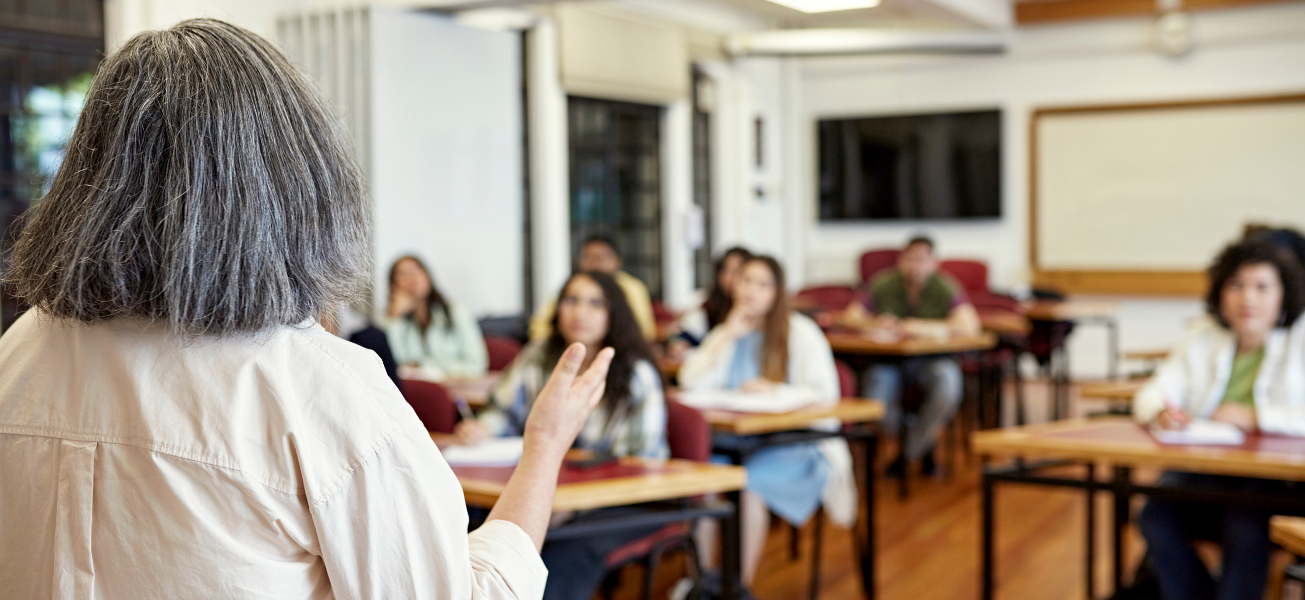Evaluate and Measure Teacher Consistency: A UDL Check-in and Growth Protocol
When I tell my kids to clean their rooms, I envision an end product worthy of a Pinterest post. Just imagine it—everything in its place, beds made, and the floor free of wet towels, seltzer cans, and dirty socks. However, their interpretation of a "clean room" often involves shoving everything into the closet or under the bed and adding trash to an already overflowing can that should have been emptied weeks before. This disconnect in our definitions of "clean" has traditionally led to frustration. But worry not—a problem identified is a problem solved!
To address "Mess-Gate," I realized I could apply the same approach I used when calibrating writing standards with my ELA colleagues. It was time for a family meeting! During our discussion, we took the time to unpack expectations and calibrate our understanding of what a clean room looks (and smells!) like. We discussed why keeping the room tidy is important, not just for appearances but to ensure that ants and mice don't become roommates. It took a few conversations, but finally, we were on the same page.
Similarly, calibrating our understanding of Universal Design for Learning (UDL) in education is essential to creating inclusive and effective learning environments. Just as aligning expectations at home can prevent misunderstandings, a shared vision of UDL helps educators implement practices that better meet the needs of diverse learners.
Our team has developed a straightforward and effective UDL Calibration Protocol designed to help educators align their understanding of UDL principles and their practical application in the classroom. This protocol fosters a deeper understanding of UDL, enhancing teaching and learning experiences for all students.
Consider completing this protocol 3-4 times throughout the year to observe and track the growth in consistency in your understanding and perception of UDL. Notice how your feedback on strengths and potential growth areas evolves, reflecting a deeper, more aligned application of UDL principles.
Step 1: Review UDL Look-Fors
Review the UDL Observation Tool. This tool helps observers reflect on and provide feedback on teaching practices using a set of specific look-fors. By using this tool, educators can identify strengths and areas for improvement, aiming to enhance the inclusivity and flexibility of classroom instruction.
Step 2: Select Focus Areas
Choose 2-3 UDL look-fors to concentrate on during your observation. This helps narrow your focus, providing a more targeted analysis and feedback. Note: If you are watching this with a small group or your staff and want to calibrate your understanding of UDL practices, creating an anonymous Google Form with multiple-choice prompts may be helpful. For example:
Firm grade-level learning objectives are visible to students and referred to throughout the lesson.- Not present
- Emerging
- Proficient
- Student-Centered
This allows each individual to share their ratings for each look-for, helping you determine if perceptions are similar or different. We have worked with numerous teams where educators watch 10 minutes of practice and rate a single look-for as not present, emerging, proficient, AND student-centered. If ratings vary widely, remember that this exercise is only diagnostic and offers great opportunities for discussion and growth.
Step 3: Watch the Video
Choose one of the videos from the Massachusetts Department of Education Video Library or another video to which you have access. Pay close attention to the elements you’ve chosen to focus on.
Step 4: Reflect on Teaching Practice
After watching the video, take some time to reflect on the teaching practices you observed, focusing on the 2-3 UDL look-fors you selected. Identify specific strengths where the teacher demonstrated strong UDL practices, such as making learning objectives clear, providing flexible learning options, or fostering a collaborative classroom environment. Additionally, pinpoint areas where the teacher could improve, offering specific, actionable feedback. Support your observations with evidence from the video, describing particular moments or strategies that illustrate the teacher's strengths and areas for improvement. Use the provided scale (Not present, Emerging, Proficient, Student-Centered) to rate the teacher’s practice for each chosen look-for and reflect on why you gave each rating based on the evidence you observed. This reflection will help you provide balanced and constructive feedback.
Step 5: Share Your Analysis
In the spirit of UDL, we encourage you to choose from several options to share your feedback. Here are some ideas to get you started.
- Writing: Compose a detailed, objective analysis using specific evidence from the video to highlight strengths and improvement areas.
- Reflection to the Teacher: Draft a reflective letter to the teacher, acknowledging their strengths and offering suggestions for improvement in a supportive and constructive manner.
- Video or Audio: Record an audio or video message discussing your observations and feedback. This format allows for a more personal and direct form of communication.
Once you complete your feedback, take some time to share and discuss your observations with each other. What do you notice? What do you wonder? Engage in a reflective conversation to uncover patterns and insights from your collective feedback. This dialogue can reveal discrepancies in your observations, highlight common strengths, and help your team calibrate your understanding of effective instructional practices.
Just like calibrating the idea of a "clean room" with my kids, this protocol helps educators align their understanding of UDL, ensuring we all work towards creating classrooms where every student has the opportunity to succeed. By discussing our observations, we refine our collective understanding of what effective UDL practices look like and foster a shared commitment to continuous improvement. This collaborative reflection is key to building a consistent and inclusive educational environment that meets the diverse needs of ALL learners. It encourages professional growth, mutual support, and the development of a common language around UDL, ultimately enhancing the quality of teaching and learning in our classrooms.
Increase the outcomes of all learners with professional learning and strategic support. Contact Us




